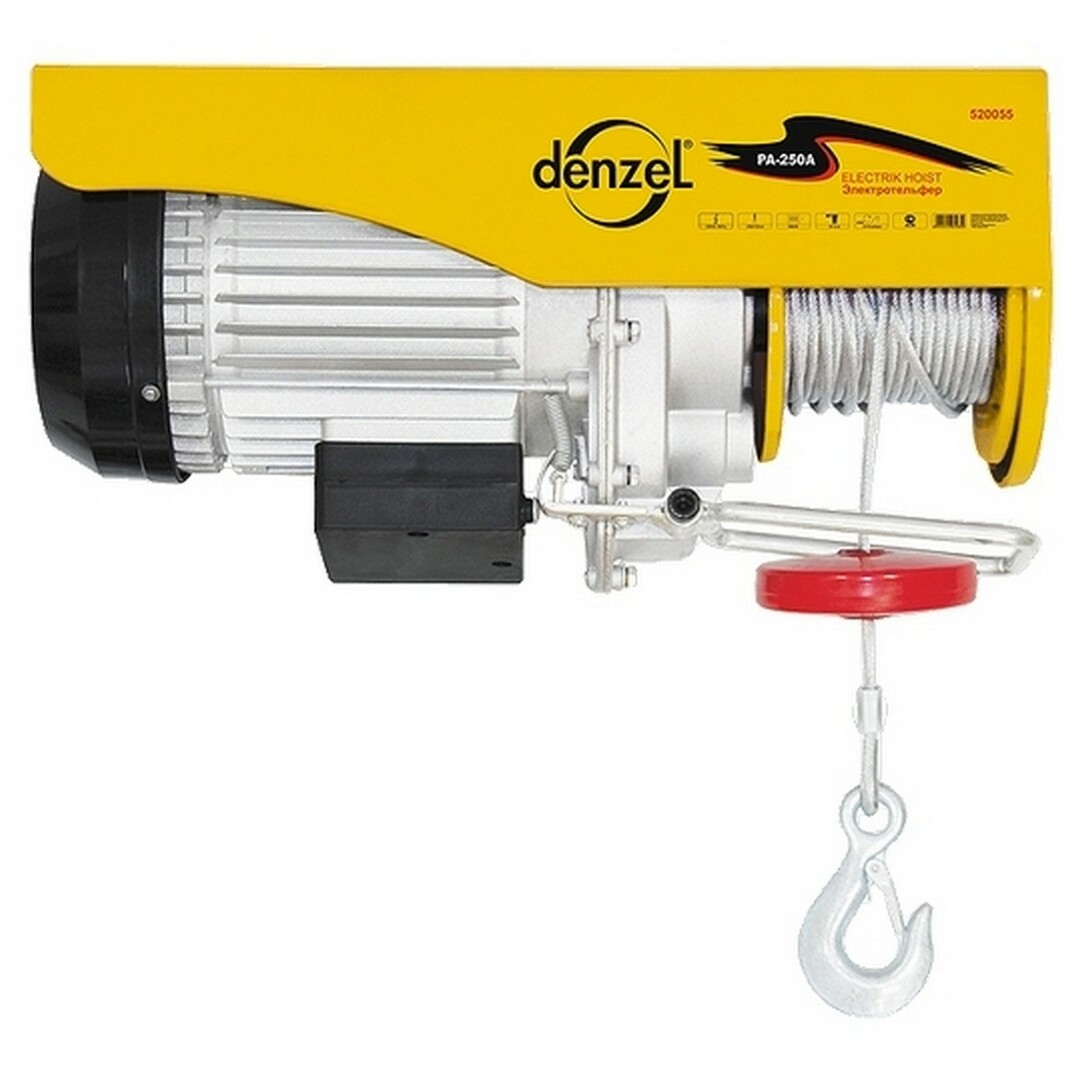This device power management - one of the most common devices of automation of processes in electrical engineering. In fact, it is automatically switch apparatus which connects or disconnects the electric circuit when the threshold values of certain conditions and / or external influences. Modern relays have significant structural differences, especially operation and a wide range of different performance characteristics. As part of this review, we take a closer look what relay, which species they are, where used, and what characteristics are.

Read article
- 1 What you need to relay: range of applications
- 2 A brief historical background of creating relay
- 3 The circuit device of the electromagnetic relay and working principle
- 4 The main technical characteristics of the relay
- 5 The main types of switches and their purpose
- 5.1 Relay DC
- 5.2 Alternating current relay
- 5.3 electromagnetic
- 5.4 Electronic relay apparatus
- 5.5 time-delay relay
- 5.6 Thermal / thermal relay device
- 6 Designation Relay Scheme
- 7 The main relay manufacturers
- 8 Electromagnetic and electronic relays - where to buy, prices
What you need to relay: range of applications
Relays are widely used in industry. It is used for automation of industrial processes, as well as for the protection of electrical installations. At the moment, widely used as electronic device under microprocessor control, and analog operating circuit which consists of resistors, transistors, diodes, etc. Field of application depends on the operating principle of the relay and the type of the controlled quantities:
- Electrical (electromagnetic) - is used for enable / disable electric appliances, power supply block, the contacts of reproduction, etc. They can be controlled by many external factors, such as voltage a mains power, load value, the number of hits (commutation). These devices are most often used when connecting large power plants, where they operate in manual mode. For process automation and management of logistics operations, such devices are rarely used.
- electrothermal - consist of a bimetallic system of plates that act as contacts. The principle of operation is based on the ability of metals to the linear expansion during heating. Used metal alloys with different coefficients of expansion. Used as temperature detectors, Protective devices (contacts disengage when overheated), time sensors.
- temporary - are widely used in the management and production equipment. Through the use of various circuits in the deceleration solenoid, electric motor, reed and other types they have a wide range of time intervals which are configurable.

A brief historical background of creating relay
Most historical records indicate that the first electric current instances of similar devices modern relays that use the principle of electromagnetic action, were obtained by the American physicist Joseph Henry 1835. They are the result of work on improvement of the telegraph, which was invented by George. Henry in 1831. Already in 1837 device went into mass production, and has been widely used in telegraphy. However, it should be noted that the first devices were obtained nekommutatsionnymi, ie not perform the essential functions now assigned to the relay control mechanisms.
According to other sources the first relay devices have been created in the period from 1830 to 1932. Russian scientist PL Schilling inventor They were used in a paging device of the electromagnetic telegraph, developed jointly with the engineer I. BUT. Shveikin that was shown October 21, 1832. However, a large number of electric cables necessary for the operation of this device, made it further operation impractical and relay elements in his scheme is not widely known.
Interesting! The name "switch" from the English word appeared RELAY, which meant the replacement procedure horses at post stations of the time.
As an independent unit, known by its name, the relay are mentioned in patent applications for the telegraph by Samuel Morse in 1837.

The circuit device of the electromagnetic relay and working principle
The most simple relay consists of an anchor of the electromagnet (core and coil), and a return spring connecting structural elements: a base frame yoke. On admission solenoid current is activated and connects the armature to the contact, as a result of the action of the electric circuit is closed. If the current supply is stopped or its parameters are reduced below a certain value, the spring returns the armature to its original position, opening the circuit. The structure of modern electromagnetic relays, in addition to mandatory elements include resistors, providing a more accurate work and capacitors for protection against voltage surges.

The electrical circuit controlled by a relay controlled call and the line on which the signal is received - control. In most cases relay compounds act as amplifierAs powerful short supply electrical circuit by feeding a slight tension. The way the relay works also depends on its type: AC or DC. For AC operation of the instrument characteristic depending on the frequency of the incoming signal. DC devices are in operative position in the two cases:
- polarized - exhibit sensitivity to current polarity, whichever is supplied to the control contact is + or - the anchor is deflected in different directions;
- neutral - in both directions when moving armature current deviates to one side.
For more information on how to operate the relay circuit of the device, the appointment of all the elements and scope can be found in the video:
The main technical characteristics of the relay
Regardless of the operating principle, there are common parameters that need to be guided in choosing the device:
- reaction time - the value defining the time interval from receipt of the control signal at the input to the time of exposure to the electrical circuit;
- Breaking capacity - power circuit or installation, which is able to control the relay;
- power trip - the minimum value required for actuation;
- setpoint - the value of operating current, usually a variable rate;
- The magnitude of the current / retraction / dropout voltage - these parameters are characterized by minimum and maximum electricity characteristics, under which a retraction anchor or fall away from contact, ie interruption Electric circuit.

The main types of switches and their purpose
In the process of improvement have been developed many types of relays. Their nomenclature is rather complicated classification:
- Application area:
- Control circuits.
- Protection of electrical installations.
- Process Automation.
- operation principle:
- Electromagnetic.
- Thermal.
- Semiconductor.
- Induction.
- Features of control current supplied parameters:
- The current strength.
- Voltage.
- Frequency.
- Power.
- Polarity.
- The principle of exposure to an electric circuit:
- Contact - closing / opening.
- Contactless - changing current settings.
Relay DC
Relays can be DC solenoid whose armature is attracted to the core due to the occurrence of a magnetic field in the coil coils and induction, functioning under the influence of an alternating magnetic field type, which is induced directly to the movable element. DC relay may be: neutral, polarized, or a combination thereof.
The advantage of such devices can be considered noise immunity of different types, and the ripple voltage drops. Among the shortcomings should be noted the need for a special power supply, and as a result of relatively high cost and complexity when connecting.
DC relay used to control automation in various industries, transportation (in particular train) etc.

Alternating current relay
AC relay does not need special power supply and can be plugged directly into a controlled mains alternating voltage. However, they too are not without certain drawbacks, the most significant are:
- occurrence of vibration during the operation and the need to prevent it;
- sensitivity is much worse than the DC device.
Therefore, this control equipment is used most often for control household appliances and small industrial plants and machines.

electromagnetic
The most common type of relay devices. It gained wide popularity because of significant advantages over solid-state analogues:
- switching power grids the total power of up to 4 kW with minor amounts the device (on average up to 10 cm³).
- Resistance to external interference and overvoltageArising within switched networks because of the work of high-voltage equipment.
- High reliability and security. Between the electromagnetic coil and a group of switched contacts insulation withstanding exists, according to the latest requirements, up to 5 kV.
- Low heat generation.
Example! 10 A switching current in the electromagnetic coil dissipates less than 0.5 watts. For comparison, the triac switching devices of comparable power to the heating takes up to 15 W, which requires solving the problem of cooling switching cabinets.
The principle of operation and connection 4 relay contact on the video:
However, the electromagnetic relay device have a number of shortcomings:
- low speed;
- Electromechanical limited resource operation;
- an electromagnetic interference contact is triggered;
- serious disadvantages when switching high currents with inductive loads.

Electronic relay apparatus
Recently, for the replacement of analog relays come electronic relay. They have considerable advantages in the accuracy of determining the source voltage, loads fed types, capacities and other operating parameters. Widely used for connection of facilities with higher power load. However, their high cost and low reliability does not allow them to completely replace analog devices.

time-delay relay
Principle of operation is based on a mechanical slowing. Implemented using pendulums, electric or electromagnetic effect. In this deceleration delay for all three types of 1 ÷ 15 seconds to 24 hours, up to 5 seconds, respectively. It used for the automation of production processes as well as for domestic purposes for the switch-off delay lighting etc.

Thermal / thermal relay device
The operating principle of the thermal relay devices based on the effects of temperature on the bimetallic pair of contact plates, which have different coefficient of thermal expansion. Thermal effects can be performed on the load current, and specifically from the heater. Thermal relay devices are used mainly for the protection of electrical from overheating.

Designation Relay Scheme
electrical schematic designation relay devices of different types in accordance with the GOST standards and partially 21.614-88 GOST 2.755-87.

The main relay manufacturers
aleph International - more than 30 years in the electronics, electrical products and automation equipment. Products considered to be one of the most reliable.
Axicom - a division of the Swiss company Alcatel Switzerland Ltd. Since 1999 is part of the concern tyco Electronics. It produces extremely high-quality products. All offered in the Russian market relay devices fully meet the requirements of national standards for electrical safety and durability of dielectrics;
CIT RELAY & SWITCH (Zhejiang, China) - a company specialized in the relay devices used in telecommunications, automotive industry and security. Has a wide range of products, the main advantage is the affordable price of products;
Finder - European manufacturer specializing in relay output and timers. It takes the 3rd place in Europe for the production of electromechanical relay machines for industrial and domestic purposes. All products are certified according to ISO 9001 and ISO 14001.
NAiS under this trademark products are manufactured Matsushita Electric Works (Japan). Products are certified according to ISO 9001: 2000 standards. The product range includes electromechanical and PhotoMOS relays, various controllers and microswitches for industrial and domestic use.
Electromagnetic and electronic relays - where to buy, prices
Prices of the electromagnetic relay device for domestic purposes are in the range 150 ÷ 450 rubles. for switching current with parameters within 8 ÷ 12 12 ÷ A voltage of 48 V. The cost of electronic devices significantly higher and may range from 1.5 to 5 ÷ 6 th. rub. depending on their functionality.
Acquire or recommended in the specialized electronics stores or online stores, where the return is provided. It is strongly recommended to buy devices on the market, as even for new devices where storage conditions are violated.
We welcome your comments or questions about the possibility of using the relay automation and experience in applying these or other means.


